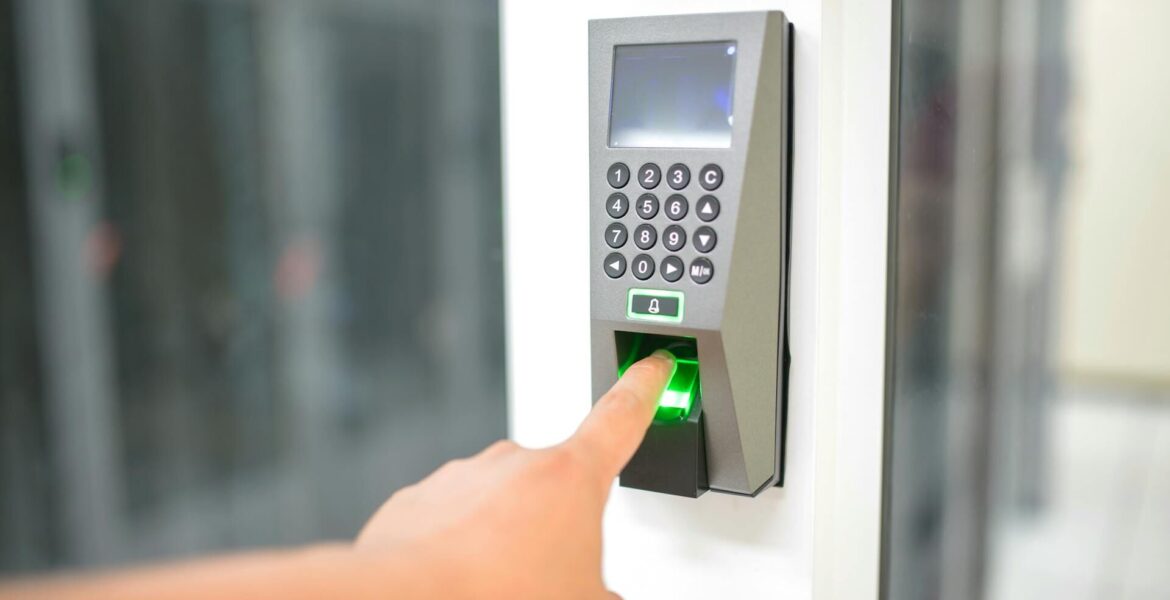Modern access control systems, such as keypads and touch screen locks, provide businesses with a blend of security and convenience. These solutions allow for efficient employee access management while maintaining high-end workplace security. By adopting advanced systems, companies can enhance safety without excessive costs. From keyless entry to digital access solutions, these technologies streamline operations and protect sensitive areas, making them essential for modern workplaces.
Table of Contents
- Understanding Modern Access Control Systems for Businesses
- Key Benefits of Implementing Access Control Systems
- Steps to Choose the Right System for Your Business Needs
- Final Thoughts on Streamlining Business Security with Access Control Systems
In today’s fast-paced business environment, security and accessibility are top priorities for organizations. With rising concerns about unauthorized access and the need for streamlined operations, modern solutions like access control systems have become indispensable. These systems not only safeguard sensitive areas but also provide businesses with flexible tools to manage employee entry efficiently.
For many workplaces, options such as keypad locks offer a perfect blend of security and convenience. Whether using touch screens or traditional buttons, these systems deliver high-end protection without excessive costs. Businesses exploring access control systems in Calgary can find tailored solutions that meet their unique needs.
As technology evolves, understanding the benefits and types of access control systems becomes crucial for making informed decisions. From keyless entry to advanced digital solutions, the right system can transform workplace safety while supporting operational efficiency.
Understanding Modern Access Control Systems for Businesses
Modern businesses require security solutions that align with their operational demands. Access control systems have emerged as a cornerstone of workplace safety, offering customizable options to suit various industries. From small offices to large enterprises, these systems provide robust protection while maintaining ease of use for employees and management.
Types of Access Control Systems
Different workplaces benefit from tailored solutions designed to meet specific needs. Below are some common types:
- Keypad Locks: These devices combine security and convenience, allowing entry through numerical codes. Touch screen or traditional button options make them versatile and cost-effective.
- Keyless Entry Systems: Utilizing technologies like RFID or mobile apps, these systems eliminate the need for physical keys, reducing risks associated with lost or stolen credentials.
- Biometric Systems: Advanced solutions such as fingerprint or facial recognition provide unparalleled security by verifying unique individual traits.
By understanding the range of options available, businesses can identify systems that align with their security goals and budget constraints. The next step is evaluating how these systems integrate into daily operations.
Key Benefits of Implementing Access Control Systems
Access control systems are more than just a security measure – they provide businesses with a range of advantages that enhance both safety and operational efficiency. By adopting these systems, organizations can address critical concerns while streamlining daily workflows.
Enhanced Security for Sensitive Areas
One of the primary benefits of access control systems is their ability to protect restricted areas within a workplace. Whether it’s a server room, executive office, or storage facility, these systems ensure that only authorized personnel can enter. For instance, keypad locks – whether touch screen or traditional button-based – offer a reliable way to secure entry points without complicating access for employees.
This dual focus on security and convenience makes them a practical choice for many businesses.
Streamlined Employee Management
Modern systems simplify the process of managing employee access. Instead of relying on physical keys, which can be lost or duplicated, businesses can assign unique codes or credentials to individuals. This approach not only reduces risks but also allows for easy updates when employees join or leave the organization.
Additionally, keyless entry systems, such as those using RFID or mobile apps, eliminate the hassle of carrying multiple keys, further enhancing workplace efficiency.
Cost-Effective Solutions
While advanced technologies like biometric systems offer cutting-edge security, simpler options like keypad locks provide an affordable yet effective alternative. These systems deliver high-end protection without excessive costs, making them accessible for businesses of all sizes. Touch screen keypads, in particular, combine modern aesthetics with durability, offering a sleek solution that fits seamlessly into professional environments.
By integrating access control systems, businesses can achieve a balance of security, convenience, and cost-effectiveness. These benefits make them a valuable investment for any organization looking to enhance its operational framework.
Exploring Types of Access Control Solutions for Workplaces
To help businesses choose the right access control system, here’s a concise comparison of the most common types, including their pros, cons, and ideal use cases:
| Type | Pros | Cons | Best For |
| Keypad Locks | High-end security without excessive costs. Easy to use with simple code entry. Touch screen options add modern appeal. | Codes can be shared or guessed if not updated regularly. Limited scalability for large teams. | Small to medium-sized businesses seeking affordable yet reliable security solutions. |
| Keyless Entry | Touchless operation (RFID, mobile apps). Easily integrates with other systems. Convenient for employees and management. | Requires technical setup and maintenance. Initial costs may be higher than keypads. | Modern workplaces prioritizing convenience and scalability for employee access management. |
| Biometric Systems | Unmatched security through unique traits (e.g., fingerprints, facial recognition). Eliminates risks of lost keys or shared codes. | Higher upfront costs. May require training for users. Potential privacy concerns. | High-security environments like data centers, labs, or executive offices requiring precision. |
Each system offers distinct advantages depending on the needs of the business. For example, keypad locks provide high-end security and accessibility at an affordable price, making them ideal for smaller businesses. Meanwhile, biometric systems are best suited for environments where cutting-edge protection is non-negotiable.
Steps to Choose the Right System for Your Business Needs
Selecting the right access control system is a critical decision that can significantly impact workplace security and efficiency. By following a structured approach, businesses can identify solutions that align with their unique requirements while avoiding unnecessary costs or complications.
Step 1. Assess Your Security Needs
The first step is evaluating the specific security challenges your business faces. For instance, workplaces with sensitive areas like server rooms or executive offices may benefit from advanced systems such as biometric scanners. On the other hand, businesses seeking a balance of affordability and functionality might find keypad locks to be the perfect fit.
Keypad locks, whether touch screen or traditional button-based, offer high-end security without excessive costs. These systems provide secure entry methods while ensuring accessibility for employees and management. Their simplicity makes them an excellent choice for environments where convenience is as important as protection.
Step 2. Consider Operational Requirements
Beyond security, consider how the system will integrate into daily operations. For example, keyless entry systems using RFID cards or mobile apps can streamline workflows by eliminating the need for physical keys. These systems also allow for easy updates when employees join or leave the organization, reducing administrative burdens.
Touch screen keypads, in particular, combine modern aesthetics with user-friendly interfaces, making them a practical solution for professional spaces. Their durability and ease of use ensure they remain a reliable choice for many businesses.
Step 3. Evaluate Costs and Scalability
While advanced technologies like biometric systems offer cutting-edge security, simpler options like keypad locks provide cost-effective solutions without compromising on quality. Businesses should also consider scalability – choosing systems that can grow with the organization and adapt to future needs.
By carefully assessing these factors, businesses can select access control systems that enhance security, streamline operations, and support long-term growth.
Final Thoughts on Streamlining Business Security with Access Control Systems
Access control systems have become a cornerstone of modern workplace security, offering businesses a blend of protection and convenience. From keypad locks – whether touch screen or traditional buttons – to advanced keyless entry solutions, these systems provide high-end security without excessive costs. By assessing needs, maintaining systems, and training employees, organizations can maximize their investment in these technologies.
As businesses continue to prioritize safety and efficiency, access control systems will remain essential tools for managing workplace security effectively.

